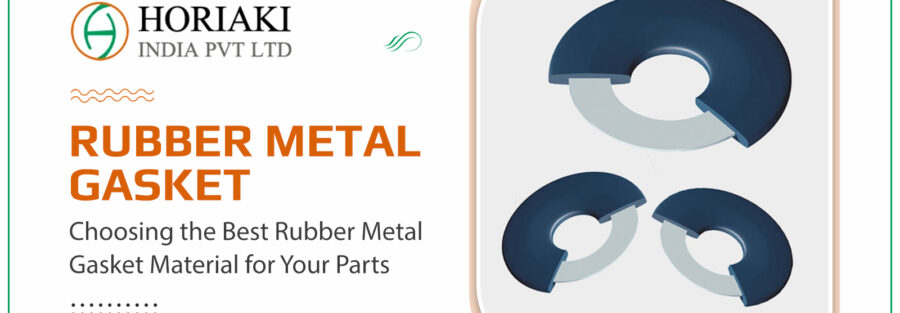Choosing the Best Rubber Metal Gasket Material for Your Parts
Gaskets play a major role in various industries and applications, serving as vital components for effective sealing. Quality and longevity are paramount in rubber metal gasket selection. Yet, the choice of material hinges on the unique demands of different environments and performance criteria. It’s essential to meticulously evaluate available options to ensure optimal investment in gasket materials.
Essential Performance Criteria for Optimal Rubber Metal Gasket Material Selection
Determining the most suitable rubber gasket material entails a thorough understanding of the performance prerequisites. These requirements are contingent upon factors such as the application’s nature, environmental conditions, and specific needs. Key considerations include:
Compression Set: The ability of the gasket material to rebound to its original shape after compression is crucial, especially for high-use applications like access doors, where enhanced resilience is necessary to maintain sealing effectiveness.
Heat Resistance: Gaskets positioned near heat sources necessitate varying degrees of temperature resistance. For instance, those employed in burner boxes or other high-temperature environments demand materials capable of withstanding elevated temperatures, while those exposed to sunlight may require resilience up to approximately 140 degrees Fahrenheit.
Durability: Factors such as exposure to sunlight, ozone, oil, and other elements can compromise gasket durability, leading to premature failure. Hence, it’s imperative to select materials resistant to such deteriorating influences.
Tight Tolerances: Precision in manufacturing is crucial for meeting the exact sealing requirements of an application, whether it involves die-cut rubber sheets or dual-durometer extrusions. The chosen material must reliably adhere to the stringent tolerances of intricately engineered gaskets.
In addition to performance considerations, other factors impact gasket material selection, extending beyond part functionality. Availability of materials for production is a significant concern; even if the ideal material is identified, prolonged lead times can hinder production schedules.
Rubber Metal Gasket Materials:
Now, let’s have a look at the most common rubber gasket materials and their strengths:
Ethylene Propylene Diene Monomer (EPDM):
- A champion of versatility, EPDM offers excellent resistance to ozone, UV rays, and weathering. This makes it ideal for outdoor applications.
- It’s known for its good compressibility and forms a reliable seal at moderate pressure and temperature ranges.
- EPDM is a cost-effective choice for applications involving water, mild detergents, and some alcohols.
Neoprene (Chloroprene):
- Known for its good tear strength and resilience, neoprene offers superior resistance to sunlight, ozone, and many oils and greases.
- However, it’s not recommended for use with mineral oils, fuels, or strong solvents as it can deteriorate.
- Neoprene finds use in applications with moderate pressure and temperatures, making it a common choice for automotive parts and appliances.
Silicone Rubber:
- A superstar in terms of temperature resistance, silicone gaskets can withstand extreme highs and lows while maintaining their sealing properties.
- They’re also champions of chemical resistance, holding strong against a wide range of oils, fuels, and chemicals.
- Silicone’s flexibility makes it suitable for applications requiring some movement or vibration absorption. Its non-toxic properties make it ideal for food and medical applications.
Nitrile Rubber (NBR):
- NBR shines in applications involving exposure to petroleum-based oils, fuels, and greases.
- It offers good tear and abrasion resistance, making it a strong choice for demanding environments.
- Keep in mind that NBR has a lower temperature tolerance compared to silicone and is not recommended for use with strong acids or ozone.
When it comes to rubber metal gasket performance, the right material is key. Of course, it is not always straightforward to determine which solution is best for your purposes. By understanding the properties of different rubber gasket materials and considering the demands of your application, you’ll be well-equipped to choose the perfect seal for your needs.


